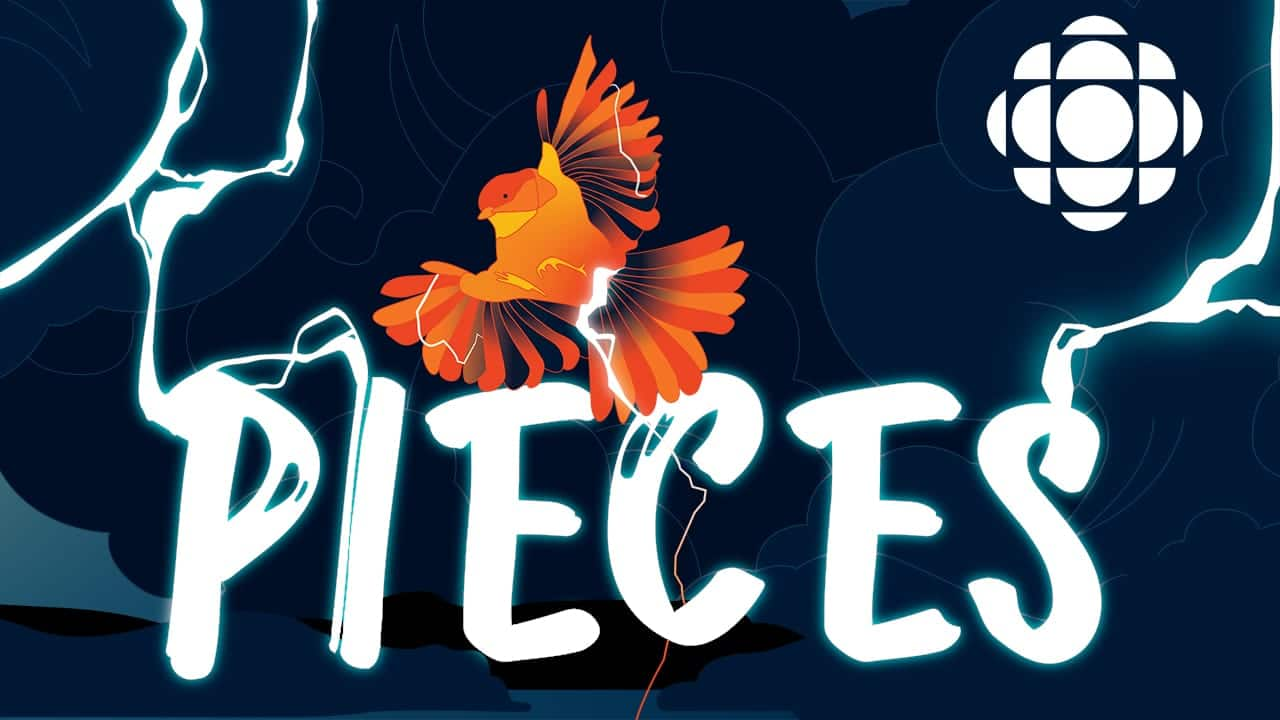My mother is Indigenous, and my dad is white. That makes me mixed — two pieces of me, split right down the middle, writes Jeremy Ratt, host of the CBC podcast Pieces.

This is an opinion column by Jeremy Ratt, host of the CBC podcast Pieces, in which he explores what it means to be mixed race and finds confidence in his Indigenous identity. For more information about CBC’s Opinion section, please see the FAQ.
It’s hard to be me.
I’m not fishing for sympathy or downplaying the struggles of other people who I recognize have it much worse. I feel safe and loved.
But I have trouble being me, because I really don’t know who “me” is at this moment.
I was born 19 years ago on a cold day at Royal University Hospital in Saskatoon. My mother is fully Indigenous, from the Woods Cree First Nation in northern Saskatchewan, while my father is Caucasian with various ties to European ancestry. This makes me a person of mixed race. Two pieces of me, split right down the middle.
Ever since I could walk and talk, it became apparent that this background was going to be a major part of me. It was clear that I was different and there was no hiding that. “Apitoscan” was a word I’d always heard when it came to the definition of Métis people. In Woods Cree, it means “half-breed” as well as “Métis.”
My own status card serves as the certificate of my Indigenous identity, but it complicates things even further as I can be categorized as Métis or just Indigenous.
I considered myself Métis for a long time because it’s how I was referred to when I was growing up. I was white-passing for most of my childhood. My half-and-half identity even defined the nicknames I was given: “Blondie” was the reaction to my lighter brown hair.

I know none of those names were ever malicious in nature, and I didn’t really feel hurt by them. But for a long time, I had trouble embracing the Indigenous side of me, because I didn’t feel like I looked “Indigenous enough”. This uncertainty worsened when I reached my pre-teen years. My skin darkened, my hair darkened.
Adolescence is a tough journey for a lot of people. For me, my personal demons became a matter of complete identity dysphoria. Not only was I seemingly rejected by a good portion of my Indigenous community, but my physical changes made it clear that I wasn’t really white either. Indigenous people said I didn’t look Indigenous, and white people said I definitely wasn’t white.
This growing feeling that I didn’t belong was something I never confessed to my friends, my family, or the people I dated. I didn’t think it was valid enough of a problem to speak about, so I kept quiet about it. And when both halves of my background didn’t bring any sense of belonging, I felt like I was lost. I was a drifter in a very grey area.

Thinking back, when I was leaving high school I came to a subconscious realization that I wanted to break my silence. I knew I wanted to tell my story, but I didn’t quite know how to do that. And that’s when this seed started to grow.
I spent the following year saving money, working at a talk radio station in Kelowna, B.C., during the day and as the cleaner at an office building at night. After listening to afternoon talk shows during my day job, I would listen to podcasts as I mopped floors and wiped windows. A couple months into that daily schedule, an idea popped into my head to make a podcast.
Pieces is a five-episode podcast series, but it’s also a journey — a journey that begins with admitting I don’t know who I am, but knowing I’m going to find out. From confessing my identity problem to my parents to asking for advice from Indigenous artists, it’s led to some of the most transformative moments in my life so far.
Do I have an answer for who I really am?
I’m still figuring it out.

Pieces1:28CBC podcast on Indigenous identity
This upcoming CBC British Columbia podcast includes themes of racist stereotypes, cultural appropriation, relationships and acceptance. 1:28
Do you have a strong opinion that could change how people think about an issue? Are you a visual storyteller or photographer who can offer insight into a personal story or a community? We want to hear from you. CBC Vancouver is looking for British Columbians who want to write 500-600-word opinion, photo essays and point of view pieces. Send us a pitch at [email protected] and we’ll be in touch.
Read more opinion and point of view columns from British Columbians

